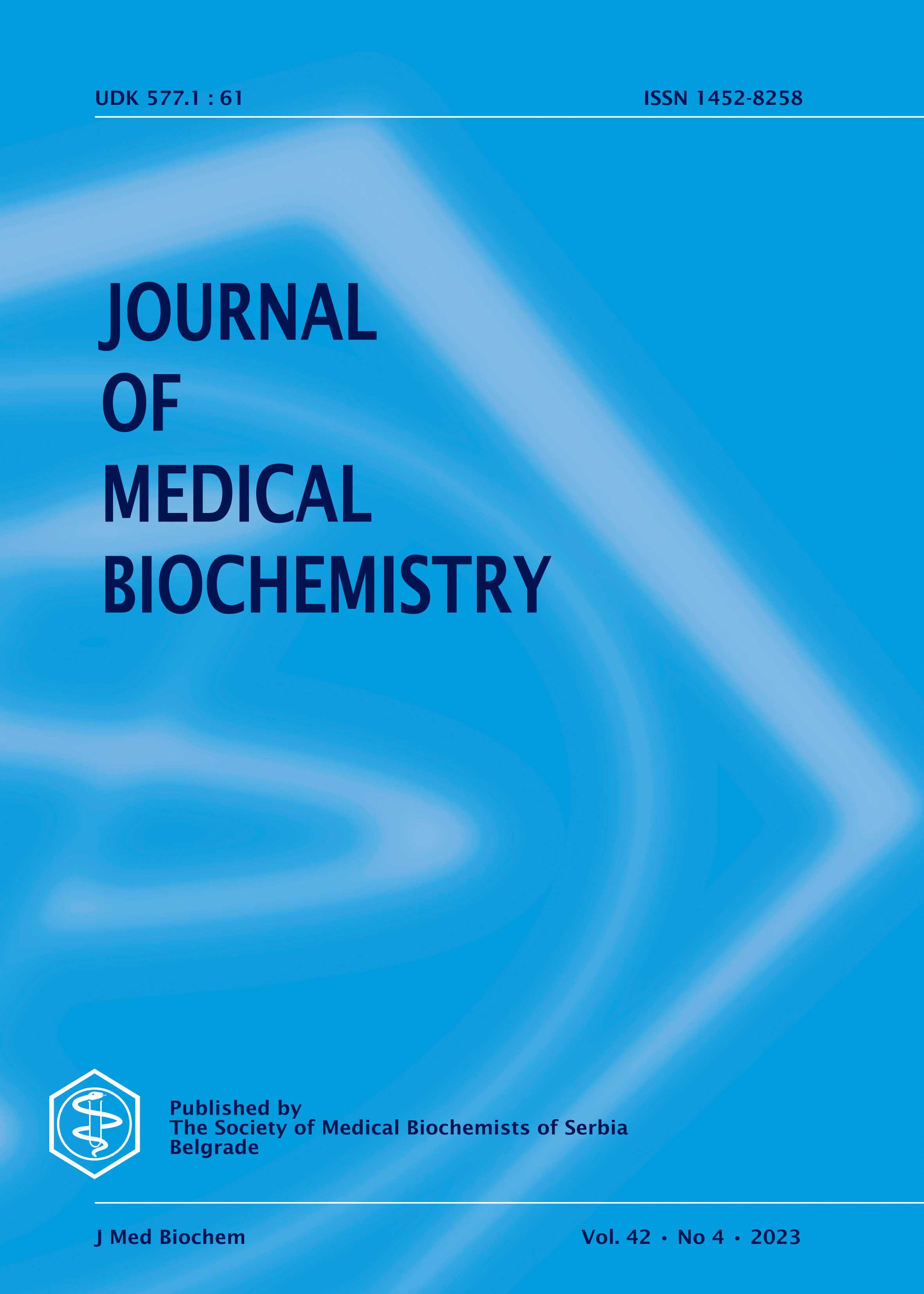The correlation of metabolic and renal biomarkers with vitamin D status in postmenopausal women
Abstract
Objective: To our knowledge, the mutual involvement of a variety of metabolic and renal biomarkers and vitamin D (determined as 25-hydroxyvitamin D [25(OH)D]) in postmenopausal women has not been examined yet. Therefore, we aimed to explore such a relationship by a thorough statistical multimarker approach.
Patients and Methods: A total of 150 (diabetes and cardiovascular disease-free) postmenopausal women were included. Anthropometric and biochemical parameters were measured. The fatty liver index (FLI) and Homeostasis model assessment of insulin resistance (HOMA-IR) were calculated. Univariate and multivariate binary logistic regression analyses were used to test the predictions of cardiometabolic markers for [25(OH)D] status. Principal component analysis (PCA) was applied to explore the effect of examined biomarkers on [25(OH)D] status.
Results: Univariate binary regression analysis revealed positive associations between FLI and [25(OH)D] [OR=1.036 (1.020-1.052), P<0.001] and HOMA-IR with [25(OH)D] [OR=2.385 (1.601-3.551), P<0.001]. Multivariate logistic regression analysis with backward selection enabled us to find the best model consisting of two markers, i.e. FLI [OR=1.032 (1.016-1.048), P<0.001] and glucose [OR=2.167 (1.001-4.693), P=0.050] associated with the first tertile of [25(OH)D]. PCA extracted 2 significant factors: Renal function-related factor and Metabolic syndrome-related factor. Renal function-related factor [i.e. creatinine, uric acid, retinol-binding protein 4 (RBP4) and cystatin C] explained 29% of the variance. Also, Metabolic syndrome-related factor (i.e. HOMA-IR, FLI, hsCRP and fibrinogen) explained 29% of the variance of the tested parameters. Moreover, binary logistic regression analysis revealed significant positive predictive ability of both factors, i.e. Renal function-related factor and Metabolic syndrome-related factor (P=0.044 and P<0.001, respectively) towards [25(OH)D] status.
Conclusion: The joint involvement of renal function biomarkers and metabolic syndrome-related features (i.e. insulin resistance, inflammation and non-alcoholic fatty liver disease) can differentiate postmenopausal women with lower [25(OH)D] levels from other women.
Copyright (c) 2023 Aleksandra Klisic

This work is licensed under a Creative Commons Attribution 4.0 International License.
The published articles will be distributed under the Creative Commons Attribution 4.0 International License (CC BY). It is allowed to copy and redistribute the material in any medium or format, and remix, transform, and build upon it for any purpose, even commercially, as long as appropriate credit is given to the original author(s), a link to the license is provided and it is indicated if changes were made. Users are required to provide full bibliographic description of the original publication (authors, article title, journal title, volume, issue, pages), as well as its DOI code. In electronic publishing, users are also required to link the content with both the original article published in Journal of Medical Biochemistry and the licence used.
Authors are able to enter into separate, additional contractual arrangements for the non-exclusive distribution of the journal's published version of the work (e.g., post it to an institutional repository or publish it in a book), with an acknowledgement of its initial publication in this journal.

